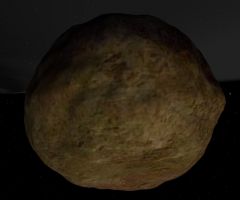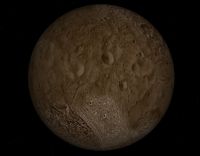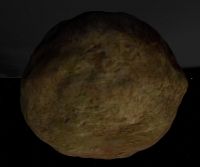Difference between revisions of "Cordelia"
(Added line item in table.) |
(Added content.) |
||
| Line 2: | Line 2: | ||
!bgcolor="lightsteelblue" colspan="2" align="center" |Cordelia | !bgcolor="lightsteelblue" colspan="2" align="center" |Cordelia | ||
|- | |- | ||
| − | |colspan="2" align="center"|[[Image:Cordelia- | + | |colspan="2" align="center"|[[Image:Cordelia-UranusMoonszip-Orbiter2003P2.jpg|240px]] |
|- | |- | ||
| − | |colspan="2" align="center"|<center>'''Cordelia from '' | + | |colspan="2" align="center"|<center>'''Cordelia from ''UranusMoons.zip'' in Orbiter 2003P2'''</center> |
|- | |- | ||
!bgcolor="lightsteelblue" colspan="2"|Designation | !bgcolor="lightsteelblue" colspan="2"|Designation | ||
| Line 14: | Line 14: | ||
!bgcolor="lightsteelblue" colspan="2"|Planetary mean orbits | !bgcolor="lightsteelblue" colspan="2"|Planetary mean orbits | ||
|- | |- | ||
| − | |width="30%"|Epoch||align="right" width="50%"| | + | |width="30%"|Epoch||align="right" width="50%"|2006 |
|- | |- | ||
| − | |width="30%"|Semimajor axis (a)||align="right" width="50%"| | + | |width="30%"|Semimajor axis (a)||align="right" width="50%"|49821096.016864 m |
|- | |- | ||
| − | |width="30%"|Eccentricity (e)||align="right" width="30%"|0. | + | |width="30%"|Eccentricity (e)||align="right" width="30%"|0.00154856755263943 |
|- | |- | ||
| − | |width="30%"|Inclination (i)||align="right" width="30%"| | + | |width="30%"|Inclination (i)||align="right" width="30%"|97.70452075° <br> (1.70526558113548 radian) |
|- | |- | ||
| − | |width="30%"|Longitude of the ascending node (LAN, ☊)||align="right" width="30%"| | + | |width="30%"|Longitude of the ascending node (LAN, ☊)||align="right" width="30%"|167.5630283° <br> (2.92452654762647 radian) |
|- | |- | ||
| − | |width="30%"|Longitude of periapsis (ϖ)||align="right" width="30%"| | + | |width="30%"|Longitude of periapsis (ϖ)||align="right" width="30%"|438.4229683° <br> (7.65192431265135 radian) |
|- | |- | ||
| − | |width="30%"|Mean longitude (L)||align="right" width="30%"| | + | |width="30%"|Mean longitude (L)||align="right" width="30%"|790.2105594° <br> (13.7917760447853 radian) |
|- | |- | ||
!bgcolor="lightsteelblue" colspan="2"|Selected physical parameters | !bgcolor="lightsteelblue" colspan="2"|Selected physical parameters | ||
|- | |- | ||
| − | |width="30%"|Mean radius||align="right" width="30%"| | + | |width="30%"|Mean radius||align="right" width="30%"|6510 m |
|- | |- | ||
| − | |width="30%"|Mass||align="right" width="30%"|1. | + | |width="30%"|Mass||align="right" width="30%"|1.312×10<sup>16</sup> kg |
|- | |- | ||
| − | |width="30%"|SidRotPeriod||align="right" width="30%"| | + | |width="30%"|SidRotPeriod||align="right" width="30%"|28944 (8.04 hours) |
|- | |- | ||
|width="30%"|SidRotOffset||align="right" width="30%"|0 | |width="30%"|SidRotOffset||align="right" width="30%"|0 | ||
| Line 42: | Line 42: | ||
|width="30%"|LAN||align="right" width="30%"|2.9255 | |width="30%"|LAN||align="right" width="30%"|2.9255 | ||
|- | |- | ||
| − | |width="30%"|Note||align="right" width="30%"|*Elements given are from Cordelia.cfg ( | + | |width="30%"|Note||align="right" width="30%"|*Elements given are from Cordelia.cfg (UranusMoons.zip) |
|} | |} | ||
| Line 61: | Line 61: | ||
|} | |} | ||
| − | <gallery> | + | <gallery widths="200" heights="200"> |
Cordelia-uranuszip.jpg|<center>Cordelia from ''uranus.zip'' in Orbiter 2002</center> | Cordelia-uranuszip.jpg|<center>Cordelia from ''uranus.zip'' in Orbiter 2002</center> | ||
| + | Cordelia-UranusMoonszip-Orbiter2003P2.jpg|<center>Cordelia from ''UranusMoons.zip'' in Orbiter2003P2</center> | ||
Cordelia 01-24-86.png|<center>Cordelia as seen from [[w:Voyager 2|Voyager 2]] on 24 January 1986,<br>from Wikimedia Commons</center> | Cordelia 01-24-86.png|<center>Cordelia as seen from [[w:Voyager 2|Voyager 2]] on 24 January 1986,<br>from Wikimedia Commons</center> | ||
</gallery> | </gallery> | ||
Revision as of 02:17, 15 September 2024
Cordelia (Uranus XIII, S/1986 U 4) is one of the inner satellites of Uranus. It was discovered by the Voyager2 spacecraft in January 1986. It is named after the daughter of the banished Duke in Shakespeare's As You Like It.
Cordelia in Orbiter
Cordelia was first introduced into Orbiter with the add-on uranus.zip in November 2002.
| Add-on | Source | Version | Author | Type | Release Date | Compatibility | Wiki article |
|---|---|---|---|---|---|---|---|
| Uranus Minor Moons | O-F Resources | 2004-12-14 | Nighthawke | Scenery | 14 December 2004 | ||
| Uranus | AVSIM | Rolf Keibel | Scenery | 5 November 2002 | |||
Cordelia as seen from Voyager 2 on 24 January 1986,
from Wikimedia Commons
| Uranus's natural satellites |
|---|
| Named Satellites:
Ariel | Belinda | Bianca | Caliban | Cordelia | Cressida | Cupid | Desdemona | Ferdinand | Francisco | Juliet | Mab | Margaret | Miranda | Oberon | Ophelia | Perdita | Portia | Prospero | Puck | Rosalind | Setebos | Stephano | Sycorax | Titania | Trinculo | Umbriel Numbered Satellites: |
| See also: Pronunciation key | rings of Uranus |
| edit The Solar System | |
|---|---|
| Central star |
Sun (Sol) |
| Planets |
Mercury - Venus - Earth - Mars - Jupiter - Saturn - Uranus - Neptune |
| Natural satellites |
Moon - Phobos - Deimos - Io - Europa - Ganymede - Titan - more... |
| Add-ons |
Planets - Dwarf Planets - Small objects - Natural satellites - Alternative star systems |
 | This natural satellite related article is a stub. You can help Orbiterwiki by expanding it.
|



